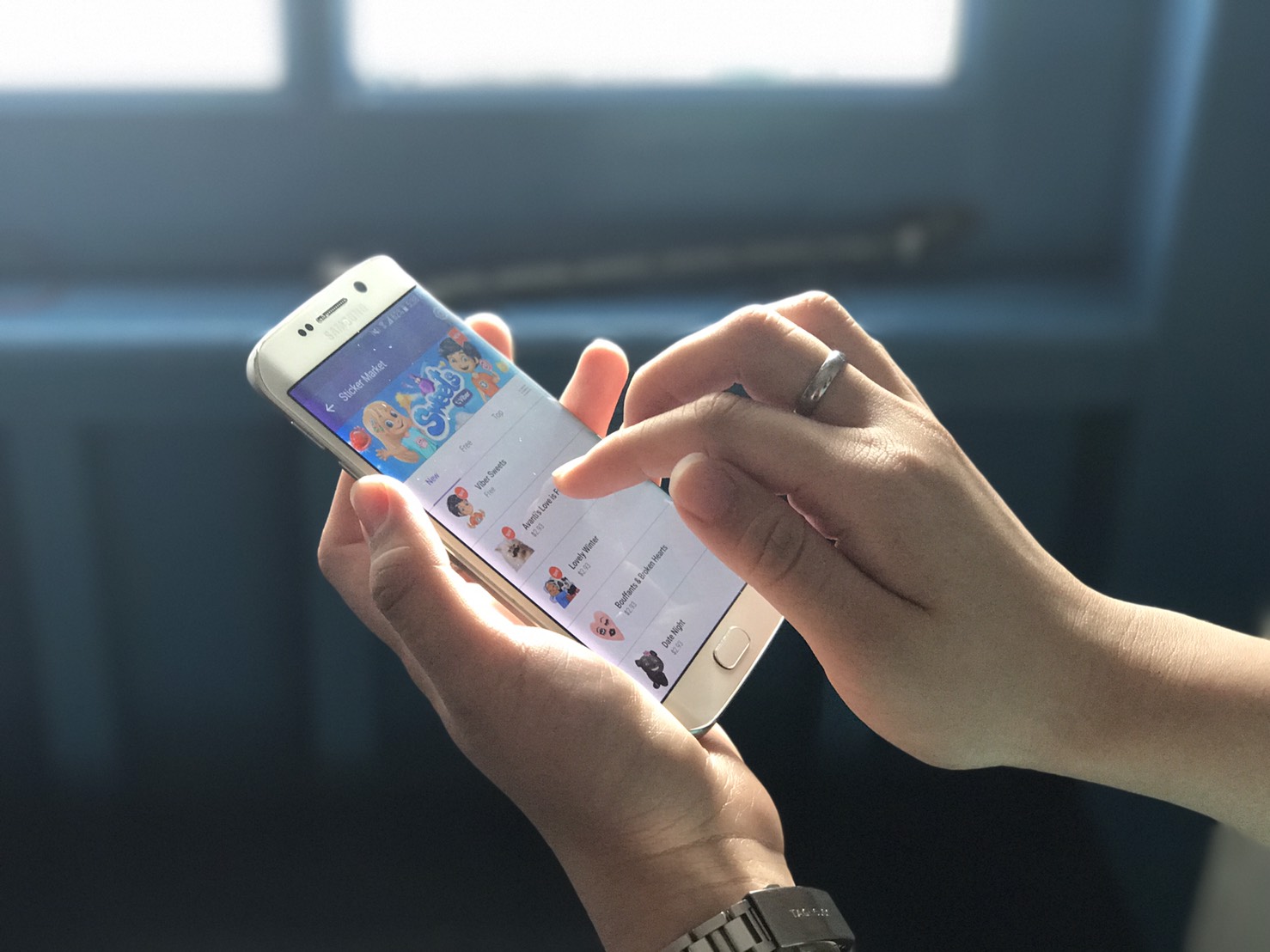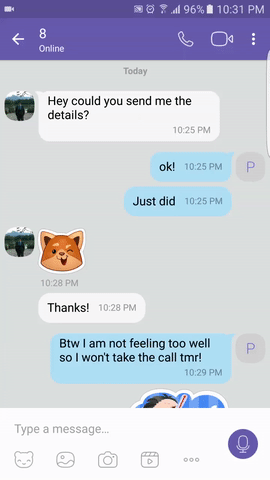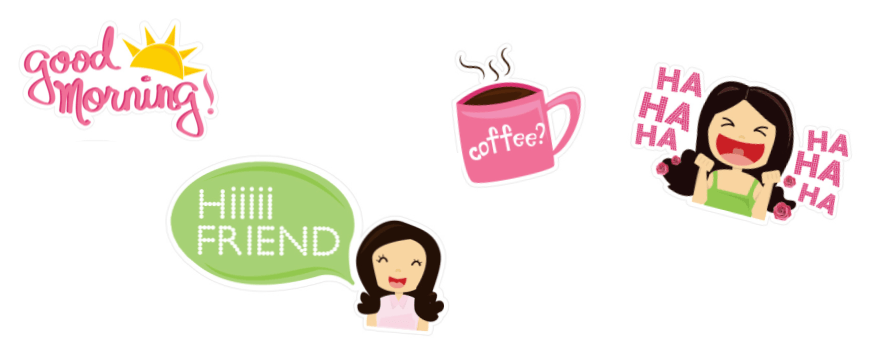
Move over, SMS and text-based emoticons. It’s the era of mobile messenger apps and stickers.
Mobile messaging apps are here to stay. According to Statista, 75 percent of global internet users downloaded messaging services on mobile devices in 2015. If you own a smart mobile device, it’s very likely that you have at least one messenger app installed.

Users in Asia spend more time in messaging apps than do users in western countries. Image credit: App Annie.
The appeal of mobile messenger apps has grown beyond cheap instant messaging to features like video calls, social media, encryption, and group chats. One such feature is stickers, which has been rising in popularity.
Popular messaging apps have developed their own sticker market to appeal to users. Brands are quick to catch onto this trend and are working with messenger apps to employ stickers as a marketing channel.
Why stickers?

Stickers can soften the message.
Stickers can be a personal way for brands to reach out to their intended audience.
Firstly, they communicate emotions and ideas beyond words. Unlike externally-loaded images, videos, or memes, stickers are non-intrusive to the flow of the conversation. In-app stickers allow users to respond to a variety of personal or professional situations with emotion or humor.
Secondly, brands enjoy high visibility within messaging apps regardless of industry. Users download stickers if they enjoy the graphics, and send them to their friends. Their friends who enjoy the stickers may download and share it with even more friends. The inbuilt virality of stickers allows brands to spread their message quickly for more organic reach and engagement with users.
According to Viber, its users send 2 billion stickers per month; almost 400 million are sent from Southeast Asia. Among these are stickers from industries including telecommunications, banking, real estate, food, and even mattresses.

Data from Viber.
Viber says that some of the top downloaded branded sticker packs have reached almost half a million downloads each. Early this year, Viber released stickers for Jollibee, a fast-food chain in the Philippines. It became popular and saw 5 million downloads. Jollibee eventually released a sticker pack every quarter in 2016.

Coca-cola enjoys one of the highest download rates as a branded stickers pack in Viber.
Viber says that the number of downloads and usage depends on the design and the texts used by brands. If users are attracted to the design, they will download the stickers. If they find stickers with texts they can send in their chats, they will keep using the pack. It gets users engaged with the brand’s stickers and may sway their perception of the brand.
How to create great stickers
Sticker creation should be cooperative. Viber tells Tech in Asia that it typically works with brands throughout the whole process. They together decide on the theme of the stickers, and brands will send a few sketches for Viber’s approval. Along the way, Viber provides guidance on how to create the whole sticker pack to complement the brand’s marketing campaign. For example, Sunsilk gets a dedicated website for their stickers.

Sunsilk’s stickers on Viber.
Brand partners get daily reports to measure the stickers’ effectivity, with data on:
- Downloads – How many people have downloaded the stickers.
- Usage – How many times a sticker from the pack was sent.
- Reach – How many people have seen the stickers.
Stickers are evolving fast. Messaging apps will become an increasingly important tool that provides multiple ways to fulfill brands’ marketing needs. Now there are more options for brands, such as animated stickers. Viber is also one of the many messenger apps giving brands the option of having public accounts, which allow brands to converse with users via one-on-one chats. When users download stickers, they automatically become followers as well, allowing brands to reach out to users.
Physical stickers, such as car decals, can make brands go viral, but stickers in chat apps are highly visible, popular, and engaging within conversations. In addition to stickers, brands can also use chatbots, games, and contests on messaging apps to provide customer service or reach out to their target audience.
It’s time to speak to your designer.
Send an email to sea@viber.com if you’re interested in releasing Viber stickers! Please include your brand and the countries you would like your stickers to be released in.
This post Why in-app stickers are the marketing arsenal brands can’t avoid appeared first on Tech in Asia.
from Tech in Asia https://www.techinasia.com/in-app-stickers-marketing
via IFTTT
No comments:
Post a Comment